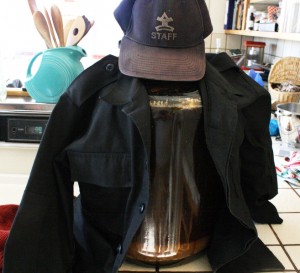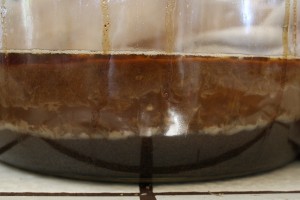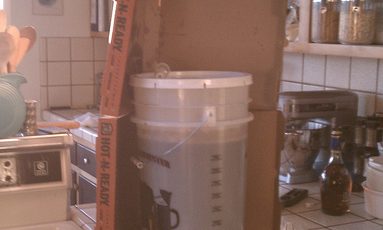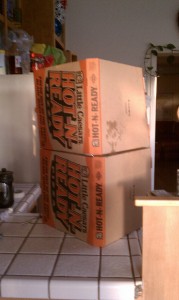This article was originally posted on Dec. 5, 2011 on my homebrew website, Fat Grey Tom’s Cider. It has been re-posted here with the same time stamp.
We secondaried Leo’s Stout, batch #2. The grains and trub settled to the bottom and the yeast settled and compacted on top of it.
We used Leo’s jacket to protect the carboy from sunlight and it seemed it deserved a hat.
The stout provided a problem, however: it was primaried in the garage, which gets much colder than the rest of the house. Considering this, the new batch of pumpkin is being primaried in the work room and the stout is being secondaried for a lot longer, for about two weeks or so, so the yeast can finish the job it didn’t get done initially. Because it is an ale and we did put it in too cold of conditions. Our bad!
However, now, it’s sitting in a bucket in the warm.
I think we learned our lesson.
All the pictures here, on Flickr, all released under a creative-commons attribution-only license.





